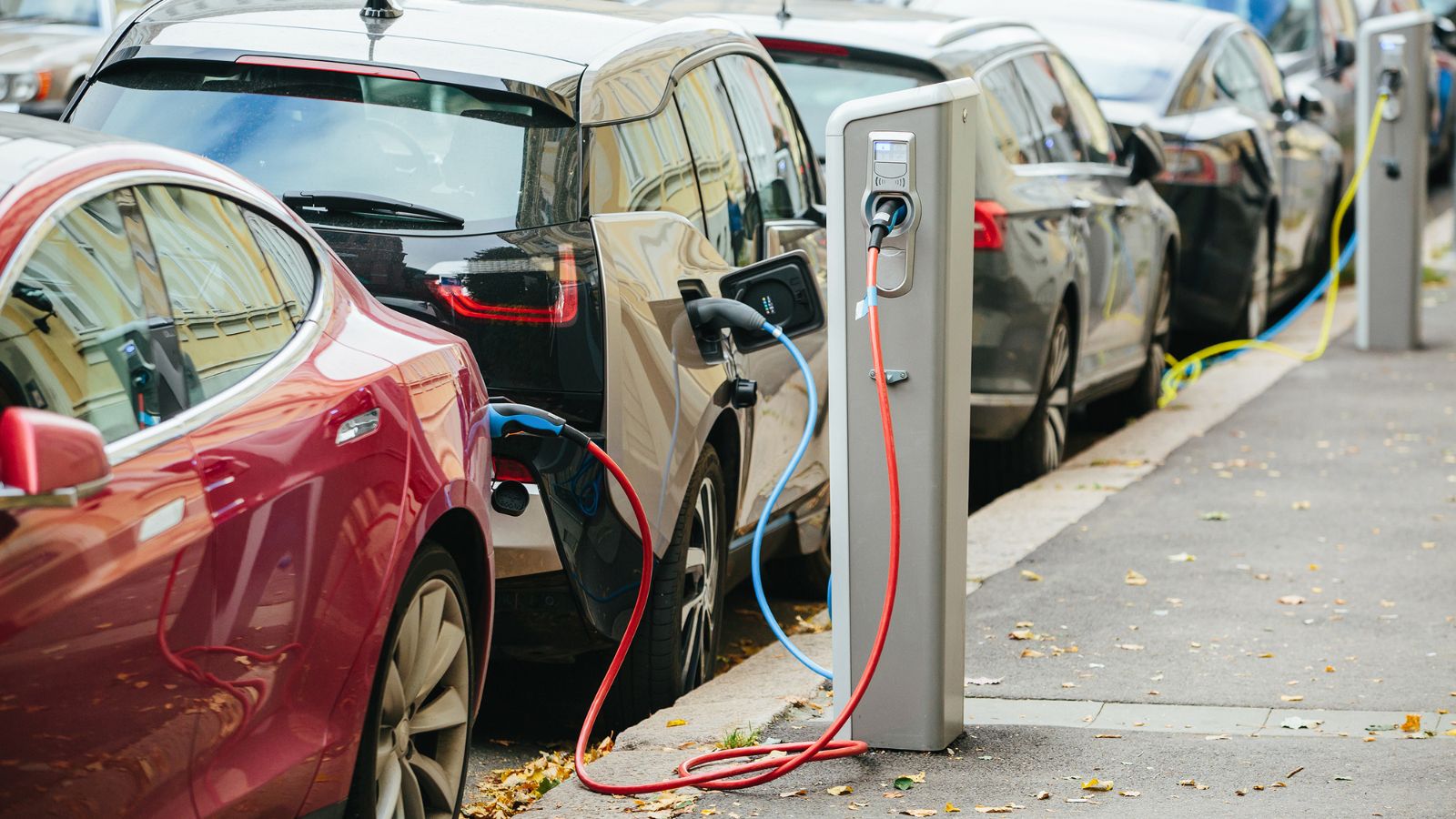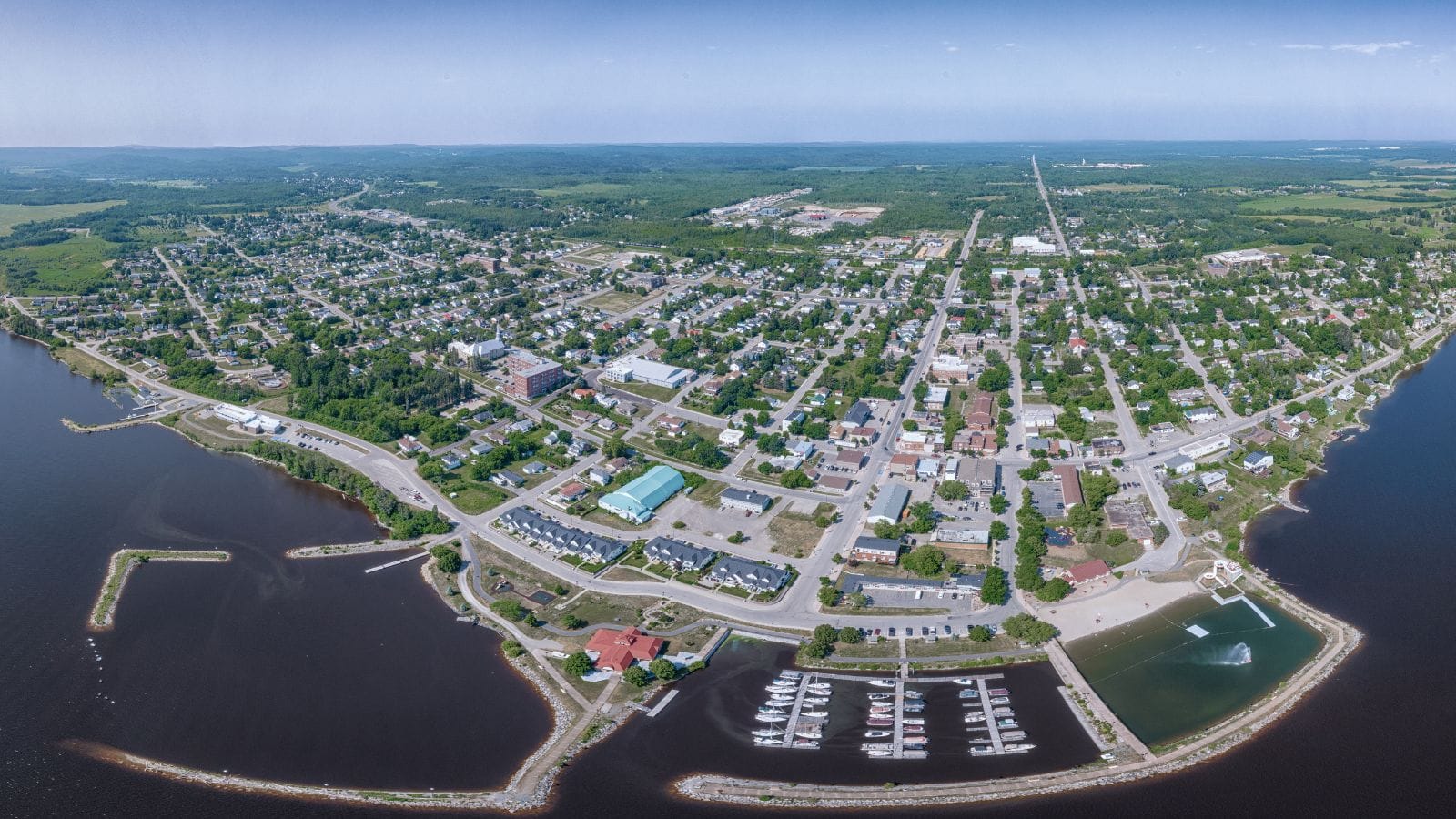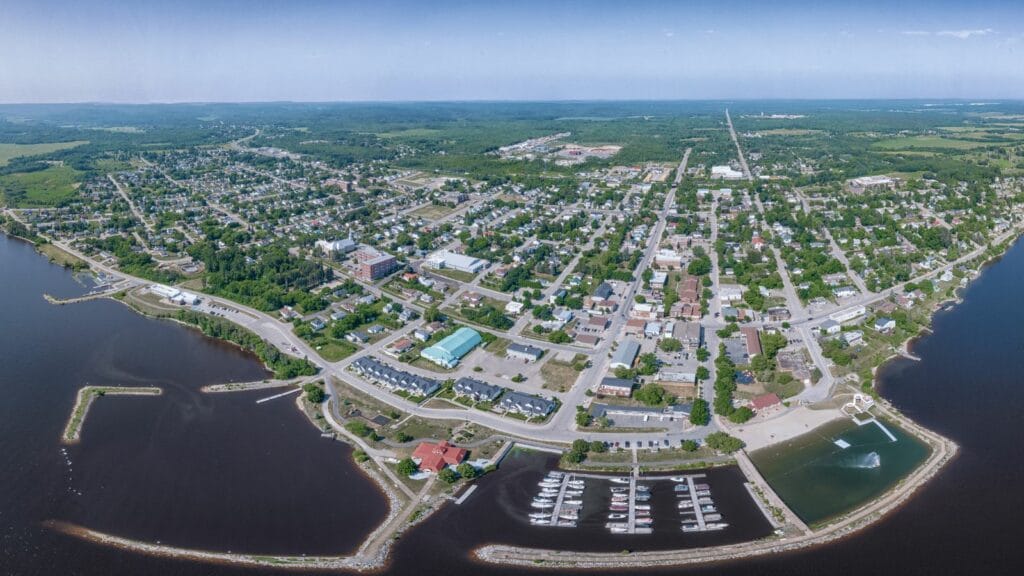As the world pivots toward greener mobility, the electric vehicle (EV) revolution has hit a frustrating snag: the charging infrastructure needed to fuel this transition is being hindered by bureaucratic delays, global supply chain disruptions, and complex trade disputes. Here are 21 notable EV charging projects that have come to a grinding halt due to supply and trade issues.
Ontario’s Rural Charging Network

In Canada, the Ontario government’s plan to expand rural EV charging has been delayed due to trade tensions with the U.S. Some key components, such as high-power charging cables and smart meters, are caught up in cross-border tariff disputes. This causes construction to slow down and costs to rise. As a result, many rural corridors remain “charging deserts,” perpetuating range anxiety among potential EV users and deterring long-distance travel to smaller communities.
Vancouver’s Downtown Fast-Charge Expansion

BC Hydro’s planned expansion initially aimed to build fast chargers across downtown and key routes. Still, equipment shortages and disrupted trade logistics with Asia have extended lead times well beyond the initial estimates. The subsequent permitting and grid connection upgrades—including new substations in South Vancouver—add further time to the ramp-up. As a result, fully operational fast-charging sites are now expected to emerge post-2026.
Quebec City Suburban Charging Network

In early 2024, municipal authorities decided to install fast‑charging stations across suburban communities around Quebec City, aiming to support EV adoption and reduce range anxiety. However, the project quickly encountered delays when critical components, such as charging cabinets, high-capacity cables, and power electronics, were held up due to global semiconductor shortages and shipping bottlenecks. Moreover, with increased scrutiny over electronics security and trade restrictions, key suppliers have backed out or raised prices.
Halifax Public-Private Charging Pilot

A pilot project intended to pair Nova Scotia Power with EVgo and local businesses has been put on hold due to sudden price spikes in charging cabinet components imported from South Korea. As of summer 2024, construction had not commenced at many locations, and officials acknowledged that “planned public charging installs have been delayed due to extended contract negotiations, utility constraints, and equipment lead times”. Despite targeting 56 chargers by July 2025, the pilot remains stalled, with installations lagging, sites still in the design or testing phase, and several awaiting the arrival of equipment.
Winnipeg Retail Corridor Charge Hubs

This Manitoba project aimed to electrify a chain of major retail parking lots. However, key bottlenecks include limited supplies of Level 3 “fast” chargers, complex wiring requirements, and grid upgrades—especially in rural or corridor locations—exacerbated by trade restrictions on critical components. The local non-profit Eco-West, tasked with deployment, appears to be awaiting approvals and hardware sourcing before construction can begin. It’s a classic case of needing infrastructure to support infrastructure.
Mississauga Condos Retrofit Plan

Developers attempting to retrofit existing condo buildings with EV chargers are facing major setbacks due to copper wiring shortages. In particular, global semiconductor shortages and constrained availability of charging station components have slowed down completion timelines. Moreover, evolving trade policies—such as tariffs and export restrictions—have made the procurement of chargers and control systems more complex and expensive. In the absence of federal or provincial mandates, municipalities like Mississauga rely on local bylaws for EV readiness, but this leaves many older condos retrofitting only piecemeal rather than comprehensively.
Toronto’s Smart City EV Grid

The Smart Grid EV pilot was designed to serve as a showcase for Ontario’s green technology initiatives. Instead, it’s been throttled by a U.S.–Canada trade spat over smart meter technology. Geopolitical tensions—especially between Canada and the U.S.—have raised tariffs and restricted access to critical materials and equipment. Notably, broader auto-sector projects, such as Honda’s planned $15 billion EV supply chain in Ontario, have been delayed by two years amid U.S. tariff pressures. These trade disputes continue to impede access to battery components, charging hardware, and grid automation technologies essential for deploying an innovative EV charging network.
Ottawa’s Municipal Bus Depot Charger Installation

Ottawa’s plan to fully electrify its OC Transpo bus depot has short-circuited—literally. Initially slated for commissioning in November 2025, delivery delays could push the commissioning date to April 2026. In parallel, OC Transpo’s transition strategy has been hindered by the limited availability of 60-foot electric buses, forcing a shift to procuring shorter 40-foot models. These compounding hurdles—backordered substation equipment, reduced charger installation pace, and slower bus deliveries—have collectively stalled the ZEB (zero-emission bus) initiative. Nevertheless, the city continues to work with AECOM, the project’s prime consultant, aiming to align depot infrastructure upgrades with the introduction of electric vehicle capability by 2036.
Whistler EV Tourism Initiative

BC’s iconic ski town hoped to add 20 new chargers to its popular tourism corridor. A significant barrier has been the limited electrical “ampacity” on-site. Although physical installations are planned, the existing grid capacity is insufficient to power the planned chargers, an issue that BC Hydro refuses to upgrade until usage demand is proven. Additionally, global supply chain disruptions have impacted the availability of charging equipment and construction components, slowing down deployment. These combined factors have delayed the Initiative’s rollout, hindering Whistler’s efforts to establish a robust EV infrastructure for tourists and residents.
Saskatoon Transit Electrification Program

Saskatoon’s early-stage electric bus project is already experiencing delays in the installation of chargers. Initial momentum began in July 2024 when two Nova Bus electric buses entered service, marking the city’s first steps toward full fleet electrification. However, the 2025 CUTRIC assessment revealed that Saskatchewan’s fossil-fuel-heavy grid—with emissions of around 730 g CO₂e/kWh—only reduces greenhouse gases by 10–15% compared to diesel, undermining the environmental rationale for immediate electrification. Additionally, financial constraints were paramount: the whole battery-electric fleet would cost CA$479 million over 15 years, plus CA$47.7 million in charging infrastructure, compared to only CA$217 million more than the diesel option, leading city staff to recommend exemptions from zero-emission mandates.
Montreal’s Inner-City Charging Pods

While the City of Montreal has launched ambitious initiatives to expand its EV infrastructure—such as a target of 11,000 public charging points by 2030—progress on inner‑city “charging pods” has lagged significantly. Although pilot installations began in 2014, with over 1,512 curbside and rapid chargers installed by late 2020, recent efforts have been hampered by global supply chain disruptions and trade bottlenecks. These issues have delayed manufacturing of Level 2 and fast‑charging units, including components sourced from international suppliers. Political tensions and naval disruptions in Asia-Pacific are also at play.
Edmonton EV Charging Pilot for Seniors Residences

A thoughtful program to provide EV charging to residents in government-subsidized senior housing is facing an ironic twist: electrical conduit and fire-rated cabling shortages are slowing progress, mainly due to tariffed construction imports. These delays threaten to push back targets for EV equity and accessibility among elderly residents. Edmonton’s EV pilot highlights the broader issue: without robust local EVSE manufacturing or installer capacity, even well-planned projects remain vulnerable to external disruptions, underscoring a need for diversified supply chains and workforce development.
PEI Community Charging Co-op

Canada’s smallest province had big dreams with its community-based EV charging co-op. Unfortunately, the chargers sourced through a German social enterprise are caught in a bureaucratic tangle over post-Brexit trade rules and Canadian import certifications. Additionally, recent tariffs and export controls on Chinese EV‑charging hardware have tightened access, increasing delivery timelines by several months. These disruptions have slowed the co‑op’s installations across PEI, pushing some sites well beyond the program’s six-month completion requirement. Meanwhile, the provincial funding program reopened recently to encourage renewed applications, but installation backlogs persist.
Regina City-Wide EV Conversion Plan

The City of Regina’s ambitious goal to install 400 chargers across public lands has fizzled in the early stages. The issue? Semiconductor chip shortages affecting controller boards—a global problem exacerbated by North America’s limited domestic production. Provincial trade restrictions on assembled components have exacerbated the issue, pushing back expected timelines. Regina’s plan aligns with its Transit Master Plan and commitment to achieving net-zero emissions by 2050, targeting a 40% reduction in transit-related greenhouse gas emissions. While essential infrastructure was scheduled to coincide with bus arrival, setbacks mean that some chargers won’t be fully operational until after the buses arrive.
Kelowna Resort Charging Upgrade

Kelowna’s high-end resorts sought to adopt a fully green approach. Still, their resort-wide charging installations have been paused due to a sudden cost spike in imported aluminum housings from India, which are now subject to revised trade tariffs under Canada’s Indo-Pacific strategy. The costs for installing a charging-ready stall ranged between C$930 and $1,550, with retrofits estimated at three times that amount. These rising costs sparked concerns from councilors about exacerbating housing affordability.
Northern Ontario Highway Rest Stop Chargers

A plan to deploy ultra-fast chargers across isolated stretches of Highway 11 and 17 is in limbo. Meanwhile, technical maintenance issues have compounded delays: marooned travelers in Wawa, Marathon, and White River faced repeated downtime, blamed on transformer failures and broken equipment, with no enforcement of reliability under federal subsidy rules. On the supply-chain front, broader EV infrastructure rollouts in Ontario have been further destabilized by stalled supply agreements and US-Canada tariff tensions—Honda has paused a C$15 billion EV supply chain build-out in Ontario due to rising trade barriers.
Windsor’s Auto Plant Employee Charging Program

Even in Canada’s auto capital, trade issues are taking their toll. The trade‑policy shifts accompany Canada’s pause of its federal iZEV EV rebate in January 2025, which removed a $5,000 incentive, sharply reducing consumer demand. The combined burden—50% effective tariffs under recent U.S. measures and evaporating subsidy support—has stalled the Windsor employee-charging infrastructure. Planned EV charger installations for staff at the plant are now delayed indefinitely until trade conditions stabilize and demand resumes. Stellantis has indicated that it is reevaluating both supplier sourcing—switching from Mexican to U.S. vendors—and its broader production strategy across North America.
Nunavut Government EV Trials

Nunavut’s government has attempted to launch electric‑vehicle (EV) charging trials, but efforts have stalled due to critical supply-chain and trade barriers. Remote Arctic conditions require specialized infrastructure; however, installing charging stations depends on diesel-powered grids, a bottleneck for EV deployment. While Yukon and the Northwest Territories made progress via federal funding under ZEVIP, Nunavut remains without public chargers because its power infrastructure cannot support electrification efforts efficiently.
Red Deer Highway Commercial Lot Electrification

This Alberta project, focused on truck stop-style chargers for electric transport vehicles, is delayed due to the slow delivery of cooling systems. These systems, required for high-load charging, are impacted by sanctions against specific Russian tech vendors. These hurdles have pushed back the project’s completion timeline, frustrated stakeholders, and delayed anticipated benefits like increased traveler charging access and regional clean-energy progress. And, despite the completion of site preparation and regulatory approvals, procurement bottlenecks remain unresolved, causing an indefinite stall.
British Columbia’s Remote Community Chargers

The Remote Community Chargers project in British Columbia—part of the “Charge North” initiative—aimed to install nearly 60 chargers across 40+ remote and northern communities along a 2,800 km corridor from Logan Lake to Haida Gwaii between 2022 and 2024. The first charger went live in Fort Nelson in September 2022, and by early 2025, the network had enabled over one million kilometers of zero-emission travel. However, the rollout has faced persistent delays. Supply‑chain and trade disruptions have slowed equipment delivery, and the high cost of remote infrastructure—especially getting power lines and real estate in rural areas—has further stalled progress.
25 Facts About Car Loans That Most Drivers Don’t Realize

Car loans are one of the most common ways people fund car purchases. Like any other kind of loan, car loans can have certain features that can be regarded as an advantage or a disadvantage to the borrower. Understanding all essential facts about car loans and how they work to ensure that you get the best deal for your financial situation is essential. Here are 25 shocking facts about car loans that most drivers don’t realize:
25 Facts About Car Loans That Most Drivers Don’t Realize
